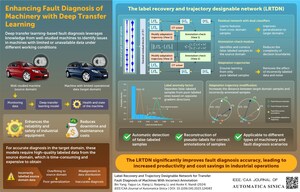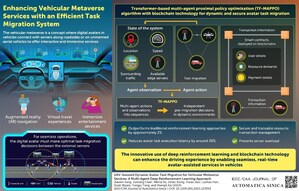IEEE/CAA Journal of Automatica Sinica Study Presents a Lightweight Network Simulator for Mega-Constellation Network Simulation
BEIJING, Aug. 15, 2023 /PRNewswire/ -- The mega-constellation satellite networks are gaining a lot of attention because of their potential in facilitating the widespread availability of sixth-generation (6G) wireless communication systems with high-capacity connectivity. However, mega-constellations have a complex network topology that makes their simulation difficult and the assessment of their performance challenging. There is thus, an urgent need to develop effective simulation tools for promoting satellite system architecture, network management, and control technology.
Against this background, a team of researchers from China and Canada, led by Associate Professor Haibo Zhou from the School of Electronic Science and Engineering at Nanjing University, has proposed UltraStar, a lightweight network simulator for the emerging mega-constellation. Their work was published on March 1, 2023 in Volume 10, Issue 3 of the IEEE/CAA Journal of Automatica Sinica. Xiaoyu Liu, Ting Ma, Zhixuan Tang, Xiaohan Qin from Nanjing University and University Professor Xuemin (Sherman) Shen from the University of Waterloo were also a part of this study.
"This study proposes a systematic and extensible software architecture, where the joint requirement for software simulation, quantitative evaluation, data statistics, and visualization is fully considered," says Associate Professor Zhou.
The researchers created simplified representations of different real-world components and models related to the networking nodes, structures, and protocol stacks of the constellation. They then initialized the satellite network with the real configuration parameters and updated their trajectories over time through the orbit prediction interface. This two-stage topology maintenance method further accounts for the high dynamics of mega-constellations. Finally, the researchers developed a new set of distinct events for basic network processes, including packet processing and discrete movement.
The team then used the simulator to fully evaluate the network performance of the first-generation Starlink of 11,927 LEO satellites—a SpaceX project announced in 2014—for different deployment stages. They determined the characteristics of the constellation topology, the performance of end-to-end services, and the effects of network-wide traffic interaction.
UltraStar demonstrated effectiveness in simulating the mega-constellation network besides demonstrating superior performance of Starlink. The simulator supported the design and verification of the topology architecture of mega-constellations as well as their networking protocols.
As Associate Professor Zhou, explains, "The core ideas in this work will greatly facilitate the simulation work of satellite network researchers and bring inspiration to the field of satellite internet networking protocol research and performance evaluation. UltraStar can provide a highly reliable and high-fidelity simulation environment for the actual development and deployment of mega-constellation networks."
Going ahead, advances in system architecture, network management, and service provisioning technology will facilitate emerging services with high data rate, low latency, and high reliability, bringing people better service quality.
Reference
Title of original paper: UltraStar: A Lightweight Simulator of Ultra-Dense LEO Satellite Constellation Networking for 6G
Journal: IEE/CAA Journal of Automatica Sinica
DOI: https://doi.org/10.1109/JAS.2023.123084
Media contact:
Yan Ou
Email: [email protected]
State of origin: Beijing, China
Telephone: +86 10 82544459
SOURCE IEEE/CAA Journal of Automatica Sinica

WANT YOUR COMPANY'S NEWS FEATURED ON PRNEWSWIRE.COM?
Newsrooms &
Influencers
Digital Media
Outlets
Journalists
Opted In





Share this article